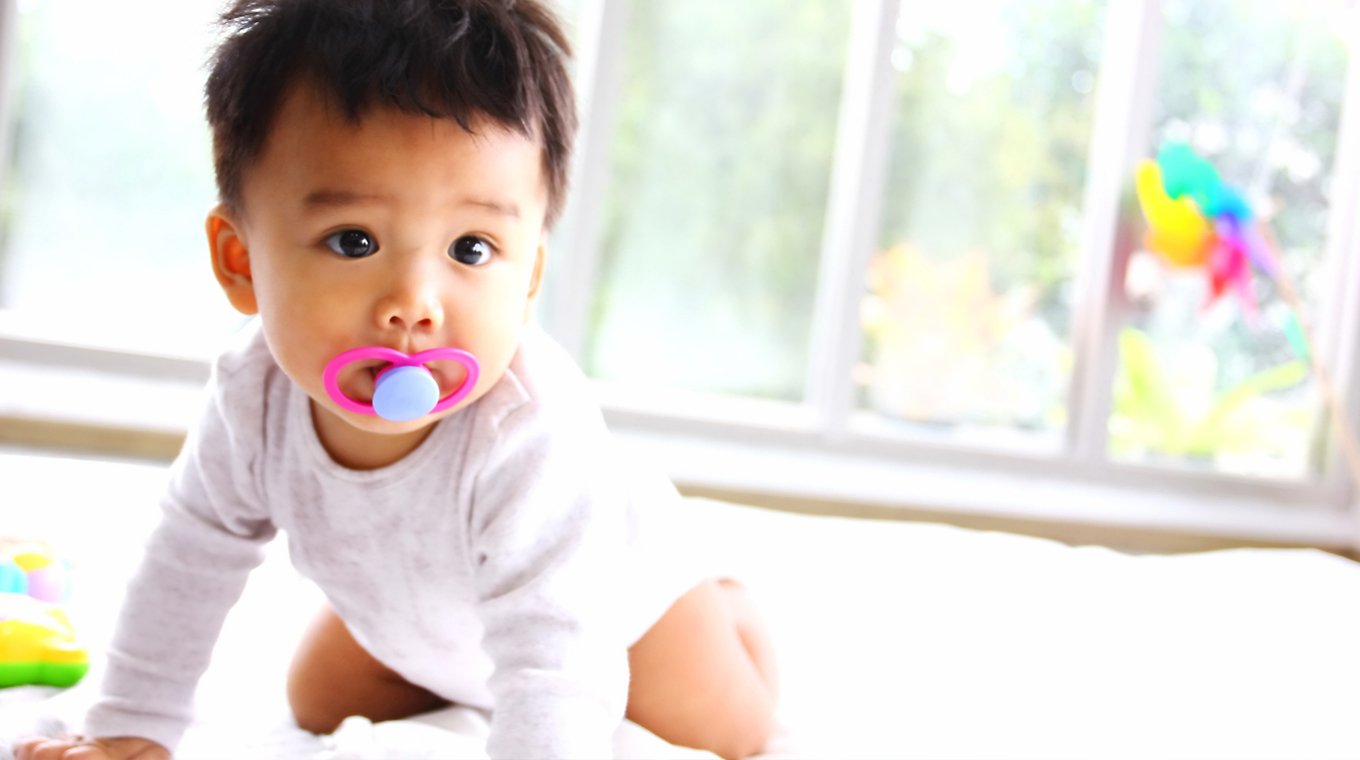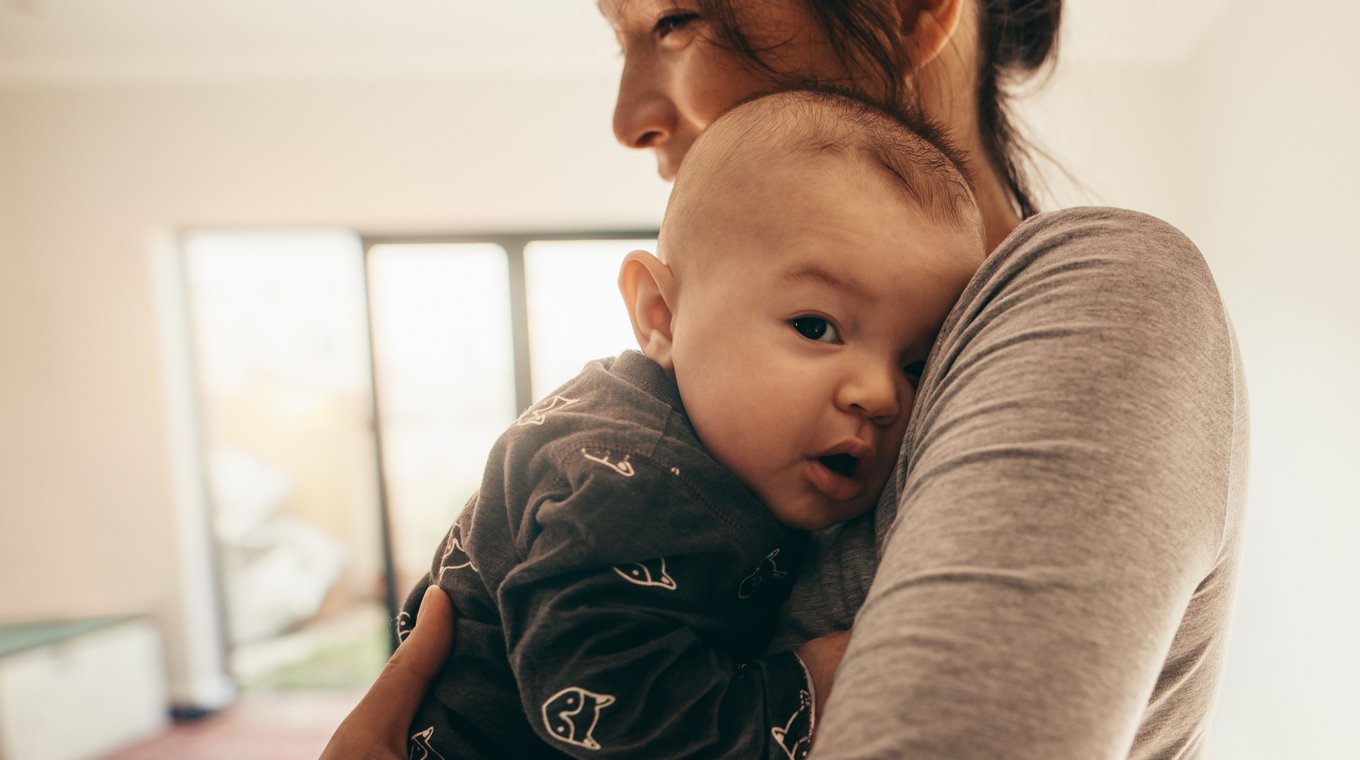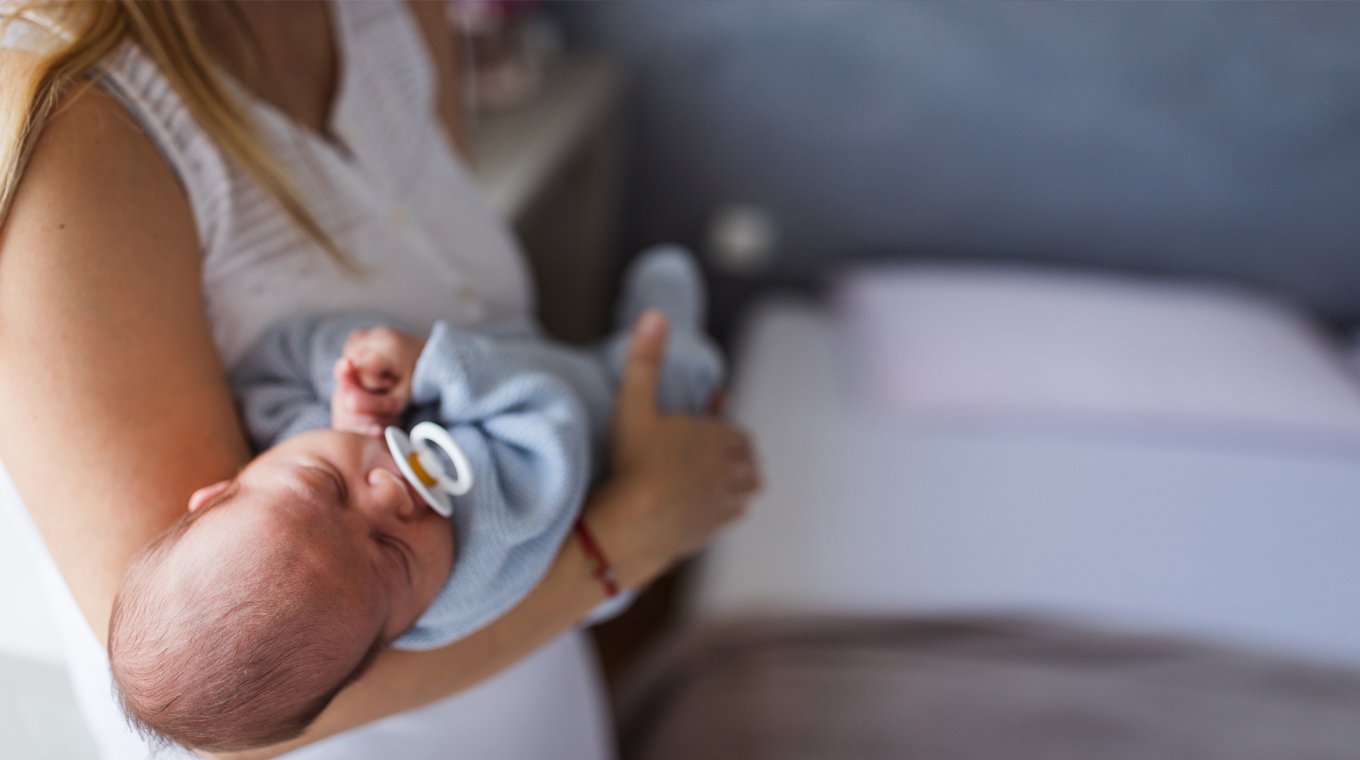IN THIS ARTICLE
Early on, it is important to begin letting your infant learn how to self-soothe. One way they can do that is by sucking on their binky. Pacifiers are great for helping an infant learn how to sleep on their own, and studies have shown that pacis can actually help avoid SIDS.
Mom Rachel Shepherd Ohta was enthusiastic about having her children use pacifiers. “It provides one of the best forms of sensory input and soothing mechanisms for a baby — sucking!” Rachel said on her blog. Because sucking is a naturally and developmentally important skill for babies to have, pacifiers are an essential baby item.
While there are many reasons why moms should have a pacifier on their baby registry, there are some things that moms should be aware of. Dependency and potential dental problems are the common concerns. Also, there's the question of pacifier use causing gas, but that appears to be a bit of a gray area.
So, does a pacifier cause gas? Let’s explore how much of an issue it might be.
What causes gas: Is the pacifier to blame?

Do know that gas in itself is not a bad thing. “Gas is a normal part of the gastrointestinal (GI) system,” nurse and lactation consultant Shelly Nalbone wrote for Texas Children’s Hospital. She went on to say how gas results from air intake when babies eat fast or when they are digesting certain foods. “Babies have immature GI systems and can frequently experience gas because of this. Pains from gas can make your baby fussy, but intestinal gas is not harmful,” Nalbone said.
So, can pacifiers cause gas?
While pacifiers are not the major culprits of producing gas, they are one of the minor causes. “Babies can swallow air during feeding, when using a pacifier and while crying,” Natasha Burgert, M.D., wrote in Forbes. Gas can be produced, however, if the baby swallows air as a result of repetitive sucking of the pacifier. “The swallowed air gets trapped in the gut and causes discomfort,” Dr. Burgert continued. To reduce the amount of air swallowed, examine the pacifier.
How to relieve gas: Tips and positions to relieve gas in babies

Relieving baby gas is all about soothing them and having them move around at the same time. It's important to help them stop crying, as that only adds to their gassiness. “When gas pains make a baby cry, babies can swallow more air. This vicious cycle makes the situation worse for babies and parents alike,” Dr. Burgert advised. Avoid the cycle and move your baby around to help them push out their gas.
Experts share their top tips and positions for relieving baby gas:
Burp your baby
During and after a feeding, burp your baby to ensure that any air that they may have consumed is relieved. Breastfeeding and bottle feeding can cause gas if the baby does not have the right latch.
Keep them upright after feeding
Even after you burp your baby, keep them upright so that they’re breathing can remain constant while having a full belly. Having them stay upright also reduces the risk of reflux.
Engage in tummy time
Tummy time is a wonderful way of relieving any gas that our babies have throughout the day. No matter the length of time, having babies use their body strength to move themselves around helps them push out any gas.
Pedal their legs
While your infant is laying down, pedal their legs as if they were riding a bike. This helps our non-crawling and walking babies work tgrough any digestion issues.
Baby massage
A baby massage helps calm a baby for bedtime and helps alleviate gas. “Move your hand across your baby’s tummy in a clockwise motion to push bubbles forward,” explained Dr. Bergurt, on how to do a gentle massage.
Football position
In a flipped cradle position, have your tiny one lay tummy down on your forearm. As you hold them, the pressure of their body weight on your arm will help release the trapped gas.
How to choose a pacifier

Finding a pacifier that is the best fit for your baby is key to reducing the amount of air that they may consume. An ill-fitting binky can only cause your baby more discomfort. Pacifiers come in a variety of types so that you can find what your baby likes.
- A cylindrical shaped pacifier has a round tip and a long nipple.
- A cherry pacifier has a more bolbous nipple that encourages more tongue movement.
- A butterfly pacifier has wider and flatter guards that are best for slightly older babies.
- An orthodontic pacifier — made by dentists — has a less invasive flat nipple that also helps with tongue movement.
Pacifier safety
Once you choose a pacifier, make sure to keep these safety tips in mind:
- Make sure the pacifier fits flush to the face and is breathable
- No matter the type of paci: disinfect it with hot water for the first use
- Never attach a string to a pacifier, or anything else that could be a choking hazard
- Avoid having a newborn fall asleep with it
- Never coat the pacifier with anything, such as sugar or honey
- Make sure there is an effective breathing guard
- Make sure that the pacifier is only one piece





